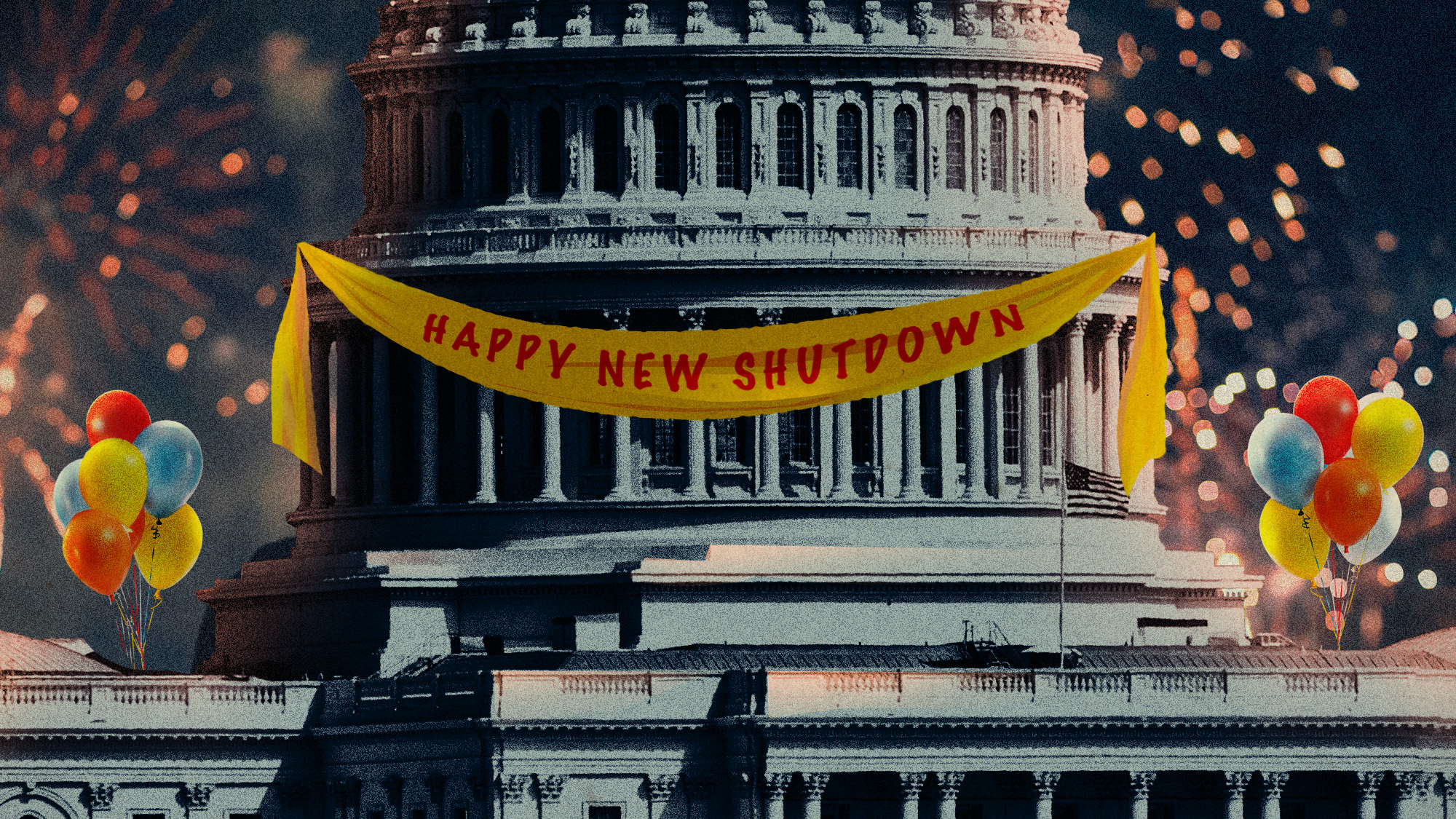Downloading guns: Firearms go digital
Libertarian activist Cody Wilson fired a plastic gun created entirely by a 3-D printer, and then uploaded blueprints to the Internet.
It was “the shot heard around the world,” said Leonard Pitts Jr. in The Miami Herald. Libertarian activist Cody Wilson last week fired a plastic gun created entirely by a 3-D printer, and then uploaded blueprints to the Internet. Those blueprints can be downloaded by any mental patient, felon, or terrorist with a 3-D printer—a desktop manufacturing device that reads digital design files and creates solid objects by laying down layer after layer of specialized plastic. Wilson calls his gun “the Liberator,” to convey its ability to empower individuals to fight state control. The only parts that can’t be printed are the metal nail that serves as its firing pin, and the bullets it shoots. Within 48 hours, the Liberator blueprints were downloaded 100,000 times and shared around the Web. There goes what remains of gun control, said David Frum in the Toronto National Post. Just as “the Tsarnaev brothers got their bomb-making instructions online,” anyone can use Wilson’s blueprints to make a primitive pistol that’s effective at short range and can pass through a metal detector. “It is, in other words, an assassin’s weapon.”
No need to sound an alarm, said Nick Vadala in PhillyMag.com. The 3-D printed gun will hardly become the preferred “instrument of crime”—at least not for many years. Today a typical 3-D printer costs between $1,000 and $8,000, and can take weeks to learn how to operate. But thanks to our lax gun laws, almost anyone can buy a handgun in a matter of minutes for $300 or less in stores or the black market. So why bother making a primitive plastic gun that can blow up in your hand when fired? Government attempts to ban the blueprints are futile, said Charles Cooke in NationalReview.com. Whatever ban is put in place would be quickly subverted by hackers, just as they overcame efforts to stop the illegal downloading of music and videos. The 3-D gun’s primary value is symbolic: It proves, once and for all, that it’s impossible for governments to enforce restrictions on ownership of weapons. That’s important, since the only people who obey gun laws of any kind “are the people who you don’t need to worry about in the first place.”
But the Constitution practically demands that we ban printed weapons, said Ryan Neal in IBTimes.com. The Second Amendment calls for a “well-regulated” militia, and there’s nothing about the Liberator that “can possibly be considered well-regulated.” The plastic gun is untraceable, and could slip past metal detectors into airplanes, government offices, courtrooms, and schools. “Recent tragedies continue to remind us that dangerous people have little trouble accessing firearms. Let’s not make it easier for them.”
The Week
Escape your echo chamber. Get the facts behind the news, plus analysis from multiple perspectives.

Sign up for The Week's Free Newsletters
From our morning news briefing to a weekly Good News Newsletter, get the best of The Week delivered directly to your inbox.
From our morning news briefing to a weekly Good News Newsletter, get the best of The Week delivered directly to your inbox.
Too late—this Pandora’s box has already been opened, said Bloomberg.com in an editorial. And homemade guns are just the start. As 3-D printing technology advances and home units can utilize ceramics and metals along with plastic, whole categories of products—from furniture to car parts to designer drugs—will suddenly be easy to make, copyrights be damned. Printers will transform medicine, too, using human cells to craft replacement kidneys, livers, and hearts. In coming decades, a recent report predicts, 3-D printing may prove to be “as disruptive as the personal computer and the Internet.” Cody Wilson just fired the first shot of that revolution, and in its echo, we are left to ponder the fact that “we lack even a moral vocabulary for this brave new world.”
A free daily email with the biggest news stories of the day – and the best features from TheWeek.com
-
 Hilarious comedians to see on tour this winter
Hilarious comedians to see on tour this winterThe Week Recommends Get some laughs from Nate Bargatze, Josh Johnson and more
-
 A January deadline could bring the pain all over again
A January deadline could bring the pain all over againToday’s Big Question A January deadline could bring the pain all over again
-
 Political cartoons for December 23
Political cartoons for December 23Cartoons Tuesday's political cartoons include an eye on CBS, cracking the middle class, and Donald Trump's name on everything
-
 Has Zohran Mamdani shown the Democrats how to win again?
Has Zohran Mamdani shown the Democrats how to win again?Today’s Big Question New York City mayoral election touted as victory for left-wing populists but moderate centrist wins elsewhere present more complex path for Democratic Party
-
 Millions turn out for anti-Trump ‘No Kings’ rallies
Millions turn out for anti-Trump ‘No Kings’ ralliesSpeed Read An estimated 7 million people participated, 2 million more than at the first ‘No Kings’ protest in June
-
 Ghislaine Maxwell: angling for a Trump pardon
Ghislaine Maxwell: angling for a Trump pardonTalking Point Convicted sex trafficker's testimony could shed new light on president's links to Jeffrey Epstein
-
 The last words and final moments of 40 presidents
The last words and final moments of 40 presidentsThe Explainer Some are eloquent quotes worthy of the holders of the highest office in the nation, and others... aren't
-
 The JFK files: the truth at last?
The JFK files: the truth at last?In The Spotlight More than 64,000 previously classified documents relating the 1963 assassination of John F. Kennedy have been released by the Trump administration
-
 'Seriously, not literally': how should the world take Donald Trump?
'Seriously, not literally': how should the world take Donald Trump?Today's big question White House rhetoric and reality look likely to become increasingly blurred
-
 Will Trump's 'madman' strategy pay off?
Will Trump's 'madman' strategy pay off?Today's Big Question Incoming US president likes to seem unpredictable but, this time round, world leaders could be wise to his playbook
-
 Democrats vs. Republicans: who do the billionaires back?
Democrats vs. Republicans: who do the billionaires back?The Explainer Younger tech titans join 'boys' club throwing money and support' behind President Trump, while older plutocrats quietly rebuke new administration